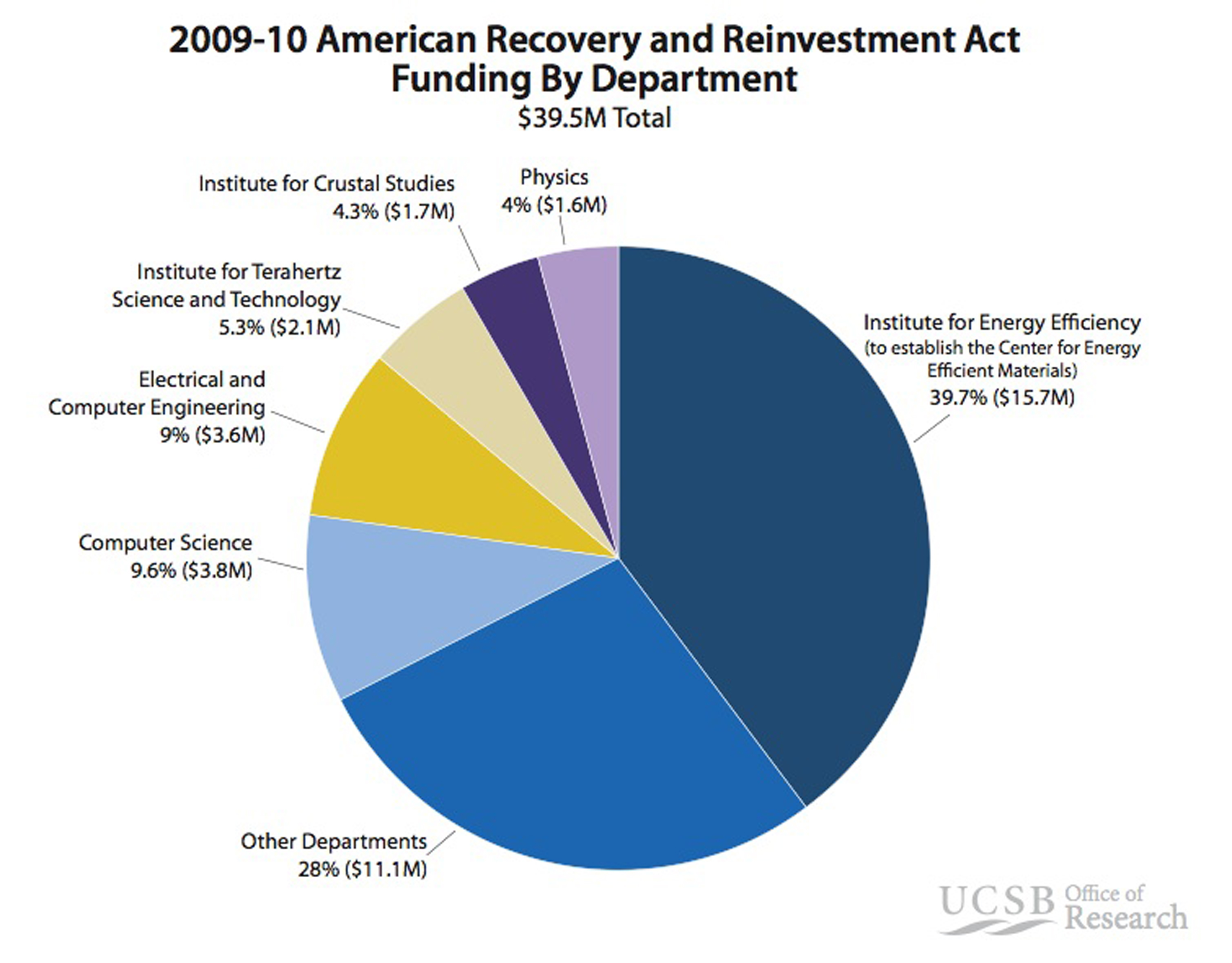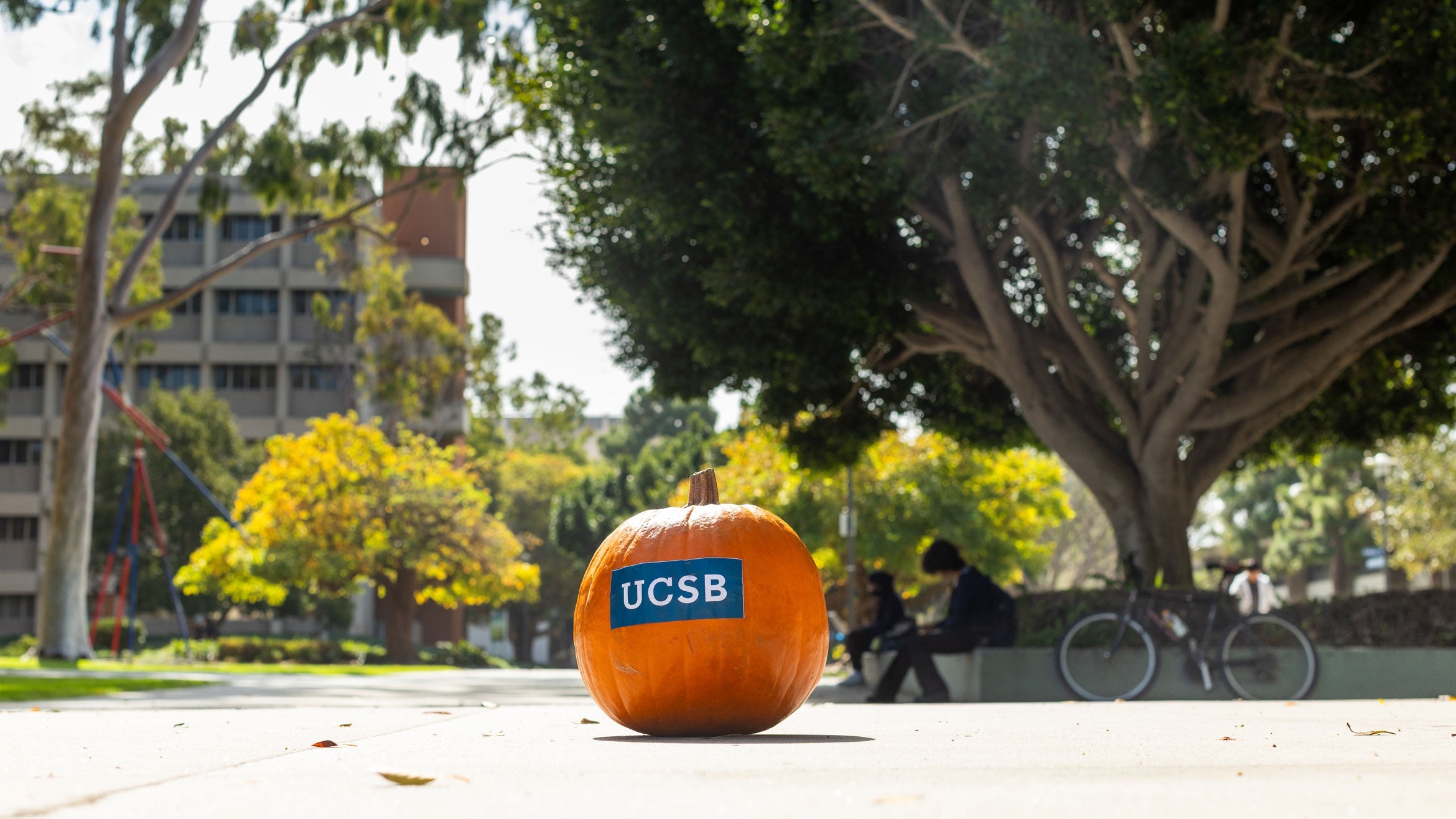

Research support from external sources broke all previous records at UC Santa Barbara during the 2009-10 fiscal year. A total of $222 million was received from federal and state agencies, corporations, and nonprofits in fiscal 2010 –– a 28 percent increase over the previous fiscal year.
"We take great pride in the achievements of our faculty, researchers, staff, and students, who together are advancing the frontiers of knowledge and making important contributions to our global society," said Chancellor Henry T. Yang. "I congratulate all of our colleagues on this year's record level of research funding. Such support is the lifeblood of a premier research university. The dramatic rise in our campus's research awards, especially from federal research agencies, is a testament to the excellence and originality of the exciting research and creative activity at UC Santa Barbara."
The increase in extramural funding, which has doubled over the past 10 years, is mostly due to increased funding from federal research agencies. UCSB received $192 million in federal funding in 2009-10, including $67 million from the National Science Foundation (NSF). Both numbers are about 30 percent more than the campus received from the government and NSF in the previous record year, 2008-09.
According to Michael Witherell, UCSB's vice chancellor for research, the record funding levels are directly attributable to the federal stimulus program, the American Recovery and Reinvestment Act (ARRA). In 2009-10, the campus received $40 million in ARRA funds, awarded through extremely competitive programs run by federal research agencies. Of the ARRA funds awarded to UCSB, $35 million came from two agencies –– the NSF and the Office of Science within the Department of Energy.
The largest research grant was $15.7 million, awarded to the Institute for Energy Efficiency (IEE) to establish the Center for Energy-Efficient Materials (CEEM). John Bowers, professor of electrical and computer engineering, is director of IEE and CEEM, which is seeking breakthroughs in the science and engineering behind three promising technologies in energy: photovoltaics, thermoelectrics, and solid-state lighting. The grant is part of a $19 million award to CEEM, and it will support a research program that will extend to 2014.
Other ARRA funds awarded to UCSB included $3.8 million to Computer Science, $3.6 million to Electrical and Computer Engineering, $2.1 million to Terahertz Science and Technology, $1.7 million to the Institute for Crustal Studies, and $1.6 million to the Department of Physics.
The humanities –– traditionally an area that receives very little federal support –– also did well in 2009-10. For example, Patricia Fumerton, a professor of English, received a two-year grant of $315,000 from the National Endowment for the Humanities (NEH) for the English Broadside Ballad Archive. It was Fumerton's third grant, and it represents a significant commitment by NEH –– about 1 percent of the amount given each year in direct research grants nationwide.
Witherell also pointed out that several UCSB assistant professors have fared well when it comes to competing for research funding. In 2009-10, assistant professors in science and engineering received seven Faculty Early Career Development awards from the NSF, which describes the awards as "the most prestigious awards in support of the early career-development activities of those teacher-scholars who most effectively integrate research and education."
Over the past six years, a larger percentage of UCSB assistant professors in science and engineering have won the NSF awards than those from any university in the country except for MIT, which matched UCSB's percentage.
"I am particularly impressed at how well the assistant professors here are competing for the funding that establishes their research programs," Witherell said. "This indicates that the national impact of UCSB research will continue to grow for the foreseeable future."
Related Links



